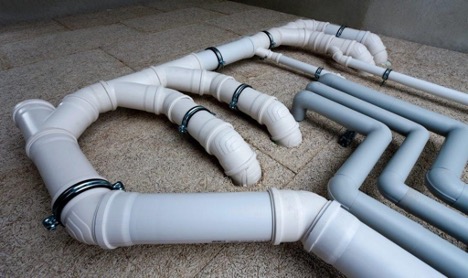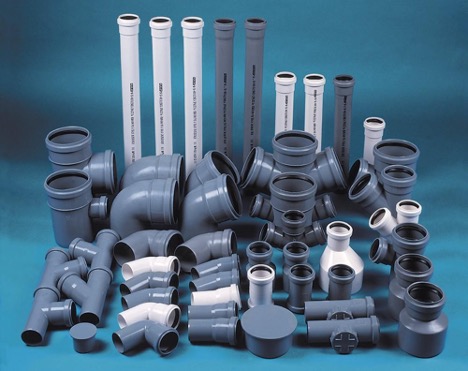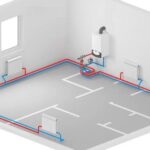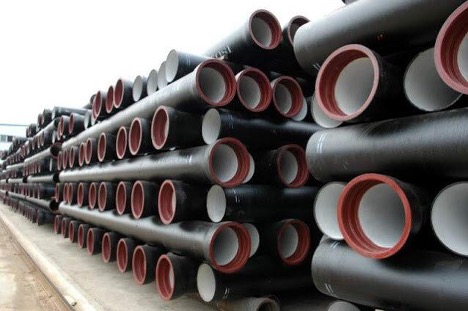Service life of plastic, polypropylene sewer pipes: what temperature can they withstand?
Every year more and more attention is paid to the reliability and environmental friendliness of materials used in construction and utility systems. Among such materials, polypropylene and plastic pipes occupy a special place. They are chosen for their strength, corrosion resistance and ease of installation. However, an important characteristic is the service life of plastic sewer pipes. You also have to consider their ability to withstand certain temperatures.

The content of the article
Why is it important to know what temperature plastic pipes can withstand?
The choice of material for water supply and sewer systems should not be based solely on cost or ease of installation. One of the critical factors is temperature. Only within its framework does the material retain its performance qualities. Plastic, due to its thermal insulation properties, is resistant to most chemicals. After all, they are often used in heating and hot water supply systems. However, not all types of plastic are equally resistant to high temperatures.
Service life of polypropylene water supply pipes and their temperature resistance
Polypropylene pipes used in water supply systems have proven themselves to be one of the most reliable and durable solutions on the building materials market. The service life of polypropylene water supply pipes can reach 50 years or more. But only if the conditions of proper operation and installation are observed. This durability is ensured due to the high chemical resistance of polypropylene to aggressive substances in water. It also has a unique ability to resist the formation of corrosion and deposits on the internal surfaces of pipes.
The temperature stability of polypropylene pipes also plays a key role in their popularity for water supply systems. These pipes are able to withstand constant fluid temperatures up to +70°C. And short-term changes can reach up to +95°C. This range makes them an ideal choice not only for cold but also for hot water supply. The operating temperature of polypropylene pipes ensures the possibility of use in various climatic conditions. Moreover, they are used without compromising their functionality and reliability.
However, to maintain all performance qualities and extend the service life of polypropylene pipes, it is important to strictly follow the technical recommendations for installation and use. Incorrect installation, exceeding the maximum permissible operating temperatures and pressures can significantly reduce the service life of polypropylene hot water pipes. Therefore, it is important to ensure high-quality installation and compliance with all operational parameters recommended by the manufacturer.

Polypropylene water supply: advantages and limitations
The use of polypropylene pipes in water supply systems is due not only to their durability, but also to their ability to withstand significant temperature loads. Here are some key benefits of polypropylene:
- Low thermal conductivity.
- Chemical resistance.
- Hygienic and environmentally friendly.
However, despite many advantages, it is important to take into account the limitations associated with the operating temperature of polypropylene pipes.
What affects durability
The durability of polypropylene pipes depends on many factors that determine their ability to withstand various external and internal influences for a long time. Here are the main aspects that affect their durability:
- Material quality. High-quality polypropylene used for the production of pipes provides resistance to chemicals, high temperatures and mechanical damage. Low-quality polypropylene can lead to rapid wear and reduced performance of pipes.
- terms of Use. Temperature conditions, pressure in the system, as well as the chemical composition of the pumped liquid have a significant impact on the service life of pipes. The operating temperature of polypropylene pipes and pressure must correspond to the recommended parameters to avoid deformation and damage to the material.
- UV stability. Polypropylene is exposed to ultraviolet radiation, which can lead to its gradual destruction. Using UV-stabilized pipes or protecting them from direct sunlight helps prevent premature aging of the material.
- Installation technique. Proper installation plays a key role in ensuring the longevity of polypropylene pipes. Improper welding, use of incompatible fittings, or incorrect installation techniques can lead to leaks and other problems that shorten the life of the system.
- Mechanical damage. Protection from mechanical damage such as impacts, kinks or compression is also important to maintain the integrity of polypropylene pipes. Damage can lead to microcracks and defects, accelerating material wear.
- Regular inspection and maintenance. Routine inspections and timely system maintenance allow minor defects to be identified and corrected before they lead to major problems.
Compliance with these conditions and recommendations will help maximize the service life of polypropylene pipes and ensure their reliable and efficient operation in water supply and heating systems.
And understanding what temperature polypropylene pipes can withstand will allow you to intelligently approach the choice of materials for heating and hot water supply systems, ensuring their reliability and durability.
Conclusion
Selecting pipes for water supply and sewerage systems is an important step in construction and renovation, which requires attention to many details, including the service life and temperature resistance of the materials used. Polypropylene and plastic pipes offer an excellent combination of strength, corrosion resistance and flexibility, making them an ideal choice for modern utility systems.



